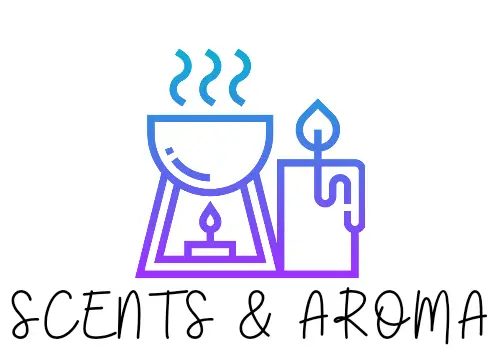If you’re a candle lover, you might have come across a mushrooming candle once or twice. As well as being unsightly, when a candle mushrooms, it can also burn poorly and the end of the wick can fall off, making the candle look alittle dirty. So, what is mushrooming and what causes it?
A mushrooming candle is where the wick develops a black ball on the end. This phenomenon happens when a wick draws up more wax than it is capable or burning. It can happen naturally, but it can also have causes that can be avoided.
Let’s take a closer look at mushrooming and some easy hacks to stop it from happening.

Why do candles mushroom?
When a wick draws up the candle wax from a candle, the heat causes it to vaporize and burn. However, if a wick draws up too much wax, the little black ball of carbon will form on the end because it can’t burn quick enough. Eventually, this gets too big and falls off.
One reason why mushrooming wicks happen is because the wrong type of wick was used during the manufacturing process. It could be just that the wick is too big for the candle it’s been placed in.
Another reason could be due to the candle wax itself having too many additives that can’t be burned away. It could be the wax type of the fragrance oil too.
Mushrooming is problematic because the flame can burn more irregularly. It will be a bigger and brighter flame, which can have its own problems. The candle will also produce a lot of soot, which you’ll be able to see on the glass if it’s in a jar.
To read in more detail the science behind why candle wicks mushroom check out my guide.
How to stop candles from mushrooming
We’re now going to look at hacks to stop candles from mushrooming. These will be useful to both candle users and well as candle makers.
Hacks to stop candles mushrooming
1. Choose the right size wick
If a wick is too large for a candle, it will cause more wax to soak up the wick. The candle won’t be able to burn away the wax as quickly as it’s being replenished and so it will only burn partially. It’s this build-up that causes the mushrooming.
Some waxes need a specific wick size, as do fragrances. Do your research, it’s not a one-size-fits-all solution.
2. Choose the right type of wick
As well as being the wrong size, the wick can be the wrong type.
CD wicks – these should be used when the wax is a softer wax like soy wax. A CD wick is made of braided cotton and has paper threads running through it. These wicks are often used to help a candle produce a stronger scent.
Zinc-core wicks – these are often to blame when candles are mushrooming. These are made from braided cotton and, as their name suggests, have a zinc inner core. Typically, these are used for rigidity purposes and will stand straight as the wax melts. Since these wicks don’t self-trim, they’re more prone to the mushrooming phenomenon.
There is even the option of using wooden wicks which will never mushroom, read more in this helpful guide.
Typically, if you’re adding dyes or fragrance oil to your candles, you need to go one size up to the conventional wick size for the wax type you’re using.
3. Choose the right type of wax
Whether you’re making candles or buying them, if you want to completely avoid mushrooming, you should avoid waxes that are more prone to it. Soy wax, for example, has a reputation for this, but all types of candle wax can cause mushrooming when conditions are met. It’s all to do with different combinations of wick, fragrance, and wax.
To learn more about the differences in all of the typical candle waxes check out this guide.
4. Time your burn
No matter the type of candle, if you burn it for too long, you might see mushrooming. When you get a new candle, you’ll often be able to read the label to check the most appropriate burn time from the manufacturer. Usually, you’ll see a minimum burn time as well as a maximum burn time (the minimum burn time is important too, for other reasons). Possible internal link here to the article I wrote about this?

5. Choose fragrance wisely
Mushrooming can be caused or exacerbated by fragrances. It could be the type of fragrance or the load of the fragrance that has the effect.
Fragrances and scents in candles change how the wax burns and make a difference to the size of the wick needed. It’s a delicate balance to get everything right and if something is slightly off, the candle can mushroom.
If you’re making candles yourself, you shouldn’t try to cut corners by buying cheaper fragrance oils from Alibaba or eBay. Always choose a reputable, well-known supplier.
As well as choosing the fragrance wisely, you’ll need to be careful with the fragrance oil percentages. Get it wrong, and you could have mushrooming. It can even be a fire hazard if it’s wrong too.
6. Candle maintenance
Maintaining a candle is important. It’s not as simple as lighting a candle, letting it burn, blowing it out. You should always look at the wick in between burnings to make sure it’s the right length. If it’s too long, mushrooming is more likely.A candlewick should be around a ¼ inch.
Keeping your candle maintained and the wick trimmed will not only stop mushrooming happening it will also stop your candles flame from going to high.
7. Use wick materials to keep your wicks in the right position during the making process
Things like wick stickums and wick sustainers are great for sticking your wick to the bottom of the container, ensuring it doesn’t move around when you’re pouring the wax. A wick centering tool is also useful too, as it will make sure that the wick stays in exactly the right position.
How to deal with a mushrooming candle and wick
Even if you’ve done all you can to prevent a mushrooming wick, they still sometimes occur and when they do, you’ll need to know what to do to deal with the problem.- If the candle wick sticks up straight and has a carbon ball on the tip, try to curve the wick so that its tip goes into the side of the flame. Leave it there and you should solve the issue and prevent future carbon balls.- If a wick is forming carbon balls no matter its position, the only thing you can do is keep trimming the wick before or after you burn you candle in order to get rid of it.
Conclusion
If mushrooming was just annoying, we might be tempted just to leave it. However, as we’ve discussed, a mushrooming wick can cause burning problems. It can even be a fire hazard as the flame can burn bigger and hotter.
If you’re making candles yourself, there are plenty of things you can do to prevent wick mushrooming. Sometimes though, it just happens and if it does, you just need to try and maintain the candle as you go.
When buying candles, always look at reviews online as these are a good way of finding a great one. If you’re really worried about mushrooming, just make sure you always follow burn time instructions and look after your wick after burning.
Good luck!
- Can You Put Perfume In A Humidifier? (Read First) - September 17, 2022
- Can You Put Essential Oil In A Steam Mop? (Safety Advice) - September 17, 2022
- How To Make Lavender Oil At Home ( Candles And Diffusers) - September 9, 2022

